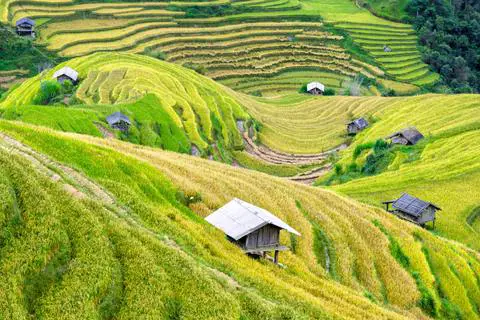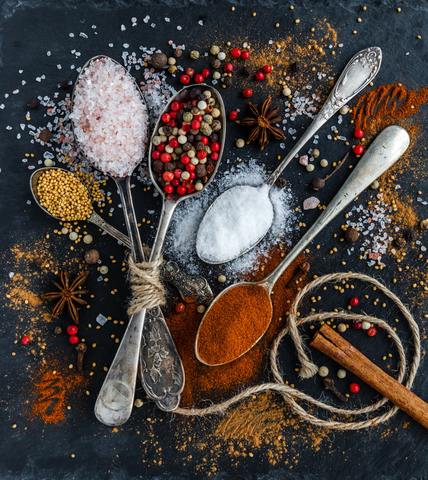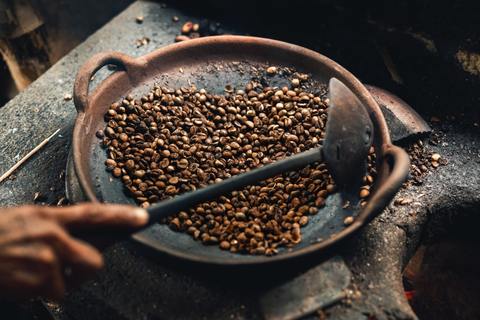Table of Contents
A Brief History of Vietnamese Coffee
Vietnam was introduced to coffee in 1857 when a “Coffea arabica” tree was discovered by a Catholic priest of French descent. Soon after, coffee plantations grew to represent a major part of the local economy and coffee became important culturally- with regional variations becoming popular. Due to the lack of fresh milk, condensed milk (sweetened) paired with dark roasted coffee remains a common variant in Vietnam.

However, it wasn’t until the Vietnam War ended and the economy re-opened that Doi Moi reforms began to allow for limited private ownership. Soon after, the coffee industry grew and coffee became a major export. Starbucks opened its first store in Vietnam in 2013, starting a precedent for worldwide retailers to follow suit.

Production of Vietnamese Coffee
Vietnam is now the world’s second-largest producer of coffee. Besides rice, coffee is the largest commodity exported from the country, accounting for approximately 18% of all coffee exported globally. In the ’90s, the production of Vietnamese coffee boomed after economic and political reforms. Coffee specialty markets haven’t shown any signs of slowing down since the mid-2000s.
Some of Vietnam’s coffee is grown in the Annamite Plateau, which has a topography that is quite complex. This diverse topography is exploited for optimal bean variety. The region produces microclimates that reflect environments observed more than 100 years ago.

However, for the most part, Vietnam’s coffee is grown in (and around) the Central Highlands because of its temperate climate. Volcanic (basalt) soil is used to grow coffee as well as pepper and cacao (which the coffee’s mocha notes can be attributed to).
Vietnamese Coffee Tasting Notes
Vietnam mostly grows robusta coffee. Robusta is renowned for its significantly high caffeine content, but also as lower quality with a bitter profile. That said, higher quality arabica coffee keeps escalating in production in Vietnam. Vietnamese coffees often feature earthy/wood notes akin to Sumatran coffees, with lower quality coffee often described as being flat and lacking sweetness. However, quality arabica coffees from Vietnam also often feature chocolatey and spicy notes.

Roasting Vietnamese Coffee
Conventionally, Vietnamese coffee has a reputation for being a dark roasted beverage. Decades old roasting preferences tend to favor a long roasting/low-temperature process. The French dark roast we are familiar with today likely originally came about from a long and slow roast (as opposed to a high temperature one), giving the beans a consistent dark tone. Although a majority of coffee connoisseurs associate dark roasts with burnt coffee (which is offered in some cafés and coffee houses), the low-temperature process endeavors to bypass any breakdown of oils and sugar, as well as quick oxidation that comes about from burning. The outcome is a more full-flavored and a consistent roast.

Beans tend to be roasted with what is called “butter oil” (this butter oil may not necessarily be clarified). Sometimes, vegetable oils get utilized. Traditionally, the “homegrown” roasting style of coffee entails the production of a caramel-esque coating effect. This is achieved by using a little bit of oil, sugar, cocoa, chicory, vanilla, and occasionally even whiskey. The roast is blackened by this coating, and as a result, the beans develop a hard (but thin) shell.
Traditional Vietnamese Coffee Drinks: Two Recipes
Vietnamese Iced Coffee Recipe
At its most basic, Vietnamese Iced Coffee (aka ca phe da) is created with the use of medium-coarse dark roast ground coffee (grown in Vietnam), as well as a phin (which is a small filter drip cup made of metal that covers a cup or mug). Once hot water gets poured in, hot coffee drops are slowly released by the phin into a mug. This finished hot coffee cup is then hastily poured into an ice-filled glass, and the final result is a Vietnamese iced coffee. This small-but-strong drink is slowly brewed and can be likened to a caffeinated and thick espresso. You can also set the brew to drip slowly over ice—a process you can watch happen at several metropolitan street corners in Vietnam.
Vietnamese coffee is often consumed “ca phe sua da”—that is to say, with condensed milk (sweetened) added to Vietnamese iced coffee. This drink is created once a coffee cup is filled up with three tablespoons (give or take) of condensed milk (sweetened) before the filter drip process transpires. This frequently consumed beverage is comprised of a few ingredients: condensed milk, coffee, and water. A Vietnamese press is traditionally used to create coffee this way; however, this particular recipe requires a pour-over coffee cone. Brewed espresso can be substituted for coffee if you lack a cone. Generally, Vietnamese iced coffee is made in individual servings, but you can serve approximately four people from a batch made using this recipe. Make sure that a dark roasted coffee with a bold flavor is used because the ice and condensed milk will end up diluting the beverage.

Vietnamese Iced Coffee Recipe
Equipment
- Coffee Cone (e.g. for pour over)
- Paper Filter
Ingredients
- 4 cups water
- 1/2 cup dark roasted coffee
- 1/2 cup sweetened condensed milk
- ice
Instructions
- Use a heatproof storage container to hold the coffee grounds. Boiling water should be slowly poured over the coffee grounds with rounded movements for balanced extraction. Don’t stir—allow a five-minute steep.
- Use a paper filter to line a coffee cone. The cone should be placed over a heatproof container.
- Pour the coffee slowly through the paper filter, letting the liquid drip completely through. This should create approximately two strong cups of coffee. Discard the coffee grounds and filter. The sweetened condensed milk should be stirred into the steeped coffee until it’s blended well.
- Put ice cubes into about four glasses. Pour the steeped coffee mixture into the glasses. Immediately serve the drinks or place them in the fridge. If doing the latter, ensure that the glasses are covered, and keep them refrigerated for as long as three days. This drink should be served over ice cubes.
Video
Vietnamese Egg Coffee Recipe
Ca phe trung is translated to mean Vietnamese egg coffee. This drink is usually served in Hanoi cafés. It is created with egg yolk, condensed milk, and brewed coffee. The beverage’s texture and taste resemble eggnog and tiramisu.

Vietnamese Egg Coffee
Ingredients
- 2 eggs (only yolks)
- 1/2 cup sweetened condensed milk
- 12 oz brewed coffee
Instructions
- Brew a dozen ounces or so of strong coffee (or 6 shots of espresso diluted to 12 oz).
- Pour the condensed milk and egg yolk into a pitcher.
- Whip the mixture using a handheld blender. Keep whipping until soft peaks are formed, which will double the volume
- Pour the espresso into the two coffee cups, then use a spoon to add the egg-whipped combination on top.
- Serve and enjoy!
